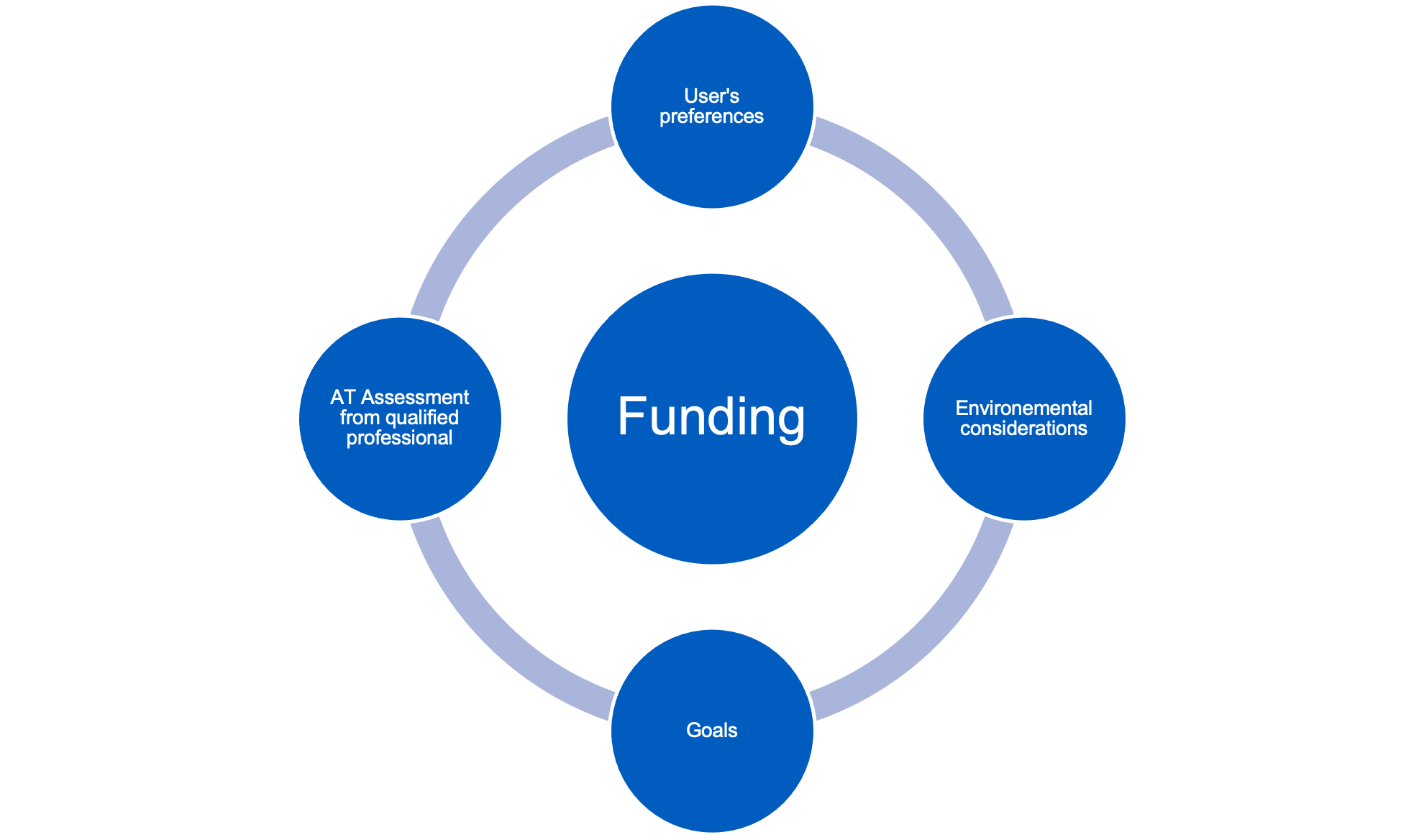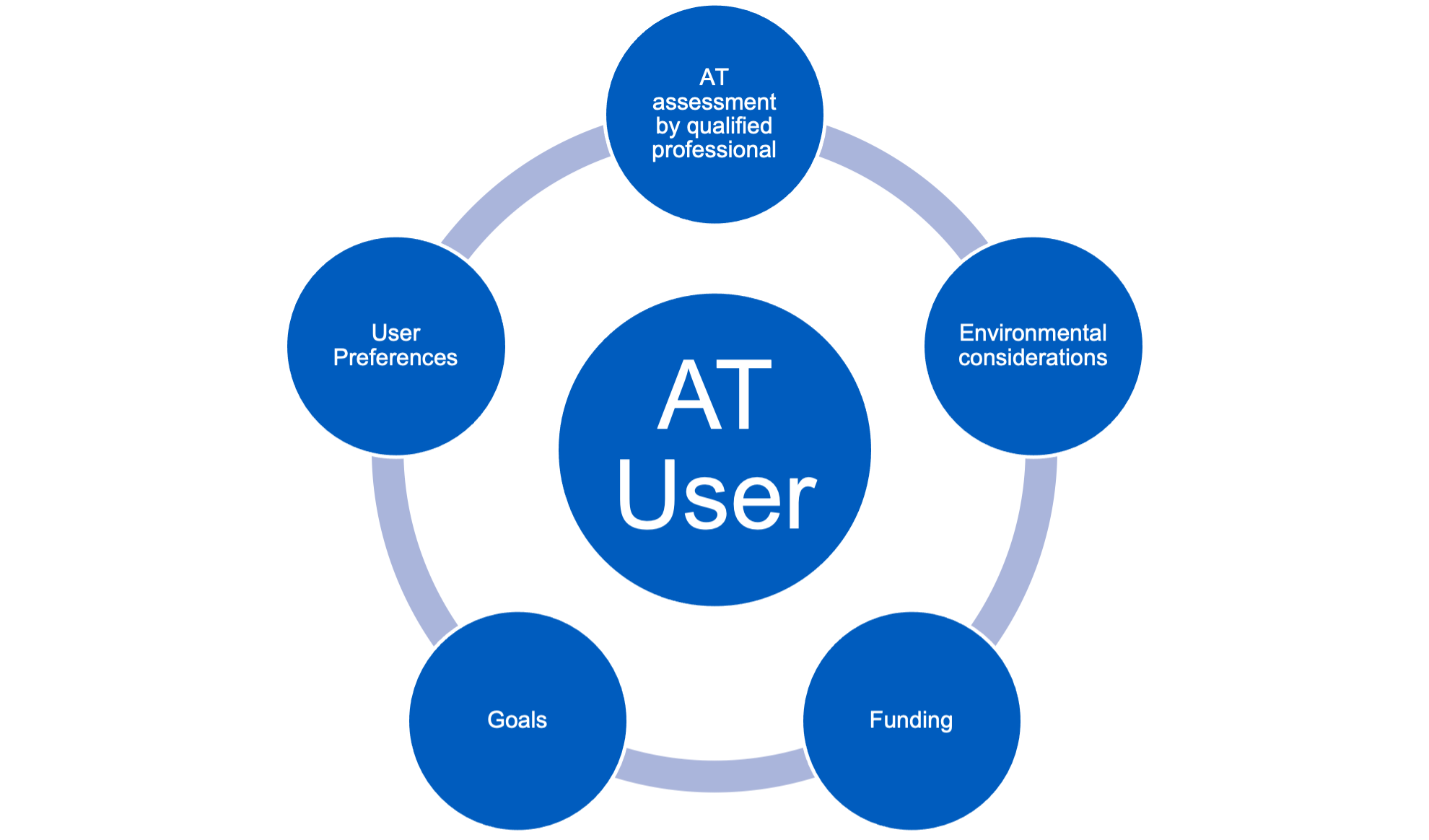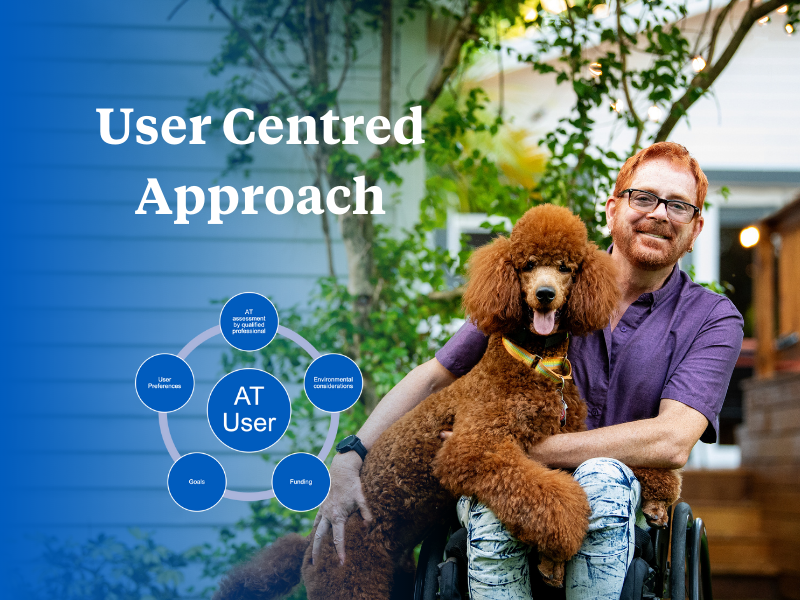It’s been a while since I have written a blog, but for those of you that have been following our blogs for the last 5 years will remember when it was just me!
Today I want to talk about something I always needed reminding of …how we maintain the user at the centre of the AT selection process, specifically I will focus on wheelchairs and their features.
First, let me start by saying that I was there. I remember the blockers that I faced when trying to get specific AT for the individuals I was working with. My biggest block was always the cost and the funding system I was working in. It has only been in the last couple years after working with clinicians in countries where there is no funding system that I have begun to see how challenging it really can be.
Now, this blog is not an attack on any funding systems or government funding within any country. I would suggest that if you get frustrated in the system you are working within that you remember there is a system and there is opportunity, which is not the case for many other countries around the world. But how does this system that we have influence us? Does it control the type of AT we are selecting or recommending for the individual we are working with?
Often, especially after years of working within a funding system we see our approach to selecting AT some what like this:

This is where funding is at the centre or the top of our thought process. We might think something similar to, “Okay, Mr. Jones needs a wheelchair – now what funding is he in so I can decide what chair to get him?”. The problem with this is that we have now put the funding over the priorities of the individual. We ALWAYS have to consider funding, and this might alter our final AT options, but we want to make sure that it is not the starting point when considering the AT solutions.
Instead, we need to remember a process more like this:

I am not saying to forget about the funding or not consider it, but how do we make sure in this process we are keeping a person/user-centred approach? This diagram can help us to remember that each piece is part of a puzzle that must be solved to find the user the best solution possible for them.
So, how do we shift that dynamic that we might be stuck in? First, try to consider what options/features the individual using the wheelchair would need to achieve the goals you both discussed. What is the minimal product you must have to reach this? Maybe you need to have a specific feature to ensure the safety of the individual. You can make a list of the absolute must-haves. Then, I usually like to consider options that would be beneficial, but perhaps not a must-have. Once, I have this in my head or on paper, then I consider the funding system. This can guide a discussion with all the people involved in the process. What are the recommendations versus what will likely be funding? This can be a difficult conversation, but it is important for everyone to be on the same page. Perhaps, there is another source for funding additional features? Don’t assume just because a funding system cannot pay that there is not another payer option.
Finally, not all funding systems are rigid. They do really want what is best for each person and have some level of flexibility depending on the individual and their needs. If you really feel that a feature of specific wheelchair is required, have you explained this fully? I find that we often have a great relationship with our clients and therefore when writing a funding application we might leave out pertinent information because it seems so obvious to us. Some suggestions for this – make sure you read your funding application after you write it. Did you write out the whole picture? Did you answer all the required questions and provide the requested information? When in doubt, have someone else read it! Ideally, someone with no history of the individual you are requesting the equipment for. (Be sure to get consent and follow privacy laws!)
You might get a denial or more questions after submission. This doesn’t mean you should just change the AT solution. Consider the reason for the denial. Did you provide enough information? Can you discuss the outcome with a peer for feedback? If you really believe this is a required feature then you can almost always appeal or resubmit for reconsideration. On a personal belief – if you say it is a requirement and then when a question is asked you change the AT equipment recommendation– was it really a required feature?
I am leaving you with that thought. I know my answer, but what do you think?
Remember, we are always here to support you. If you have any funding questions or need support please email us at:
Australia: Education.AU@permobil.com
New Zealand: Education.NZ@permobil.com
Other Countries: Education.APAC@permobil.com
Author

Rachel Fabiniak PT, DPT
Clinical Services Director, Asia-Pacific
Rachel Fabiniak began her studies at The Georgia Institute of Technology, where she graduated with her Bachelor of Science in Biology in 2009. Rachel then went on to receive her Doctorate in Physical Therapy from Emory University in 2013. After receiving her doctorate, Rachel went into clinical practice as a physiotherapist in the Spinal Cord Injury Day Program at Shepherd Center in Atlanta, Ga. Rachel also has experience in community physiotherapy and inpatient rehabilitation. During Rachel’s time at Shepherd Center, she developed a passion for seating and mobility which ultimately led to her career with Permobil. Rachel joined on with Permobil in January 2018 and relocated to Sydney, Australia in June 2018 as the clinical education specialist for Australia and New Zealand. In February 2020 Rachel moved into the role of Director of Clinical Services for Asia-Pacific.
